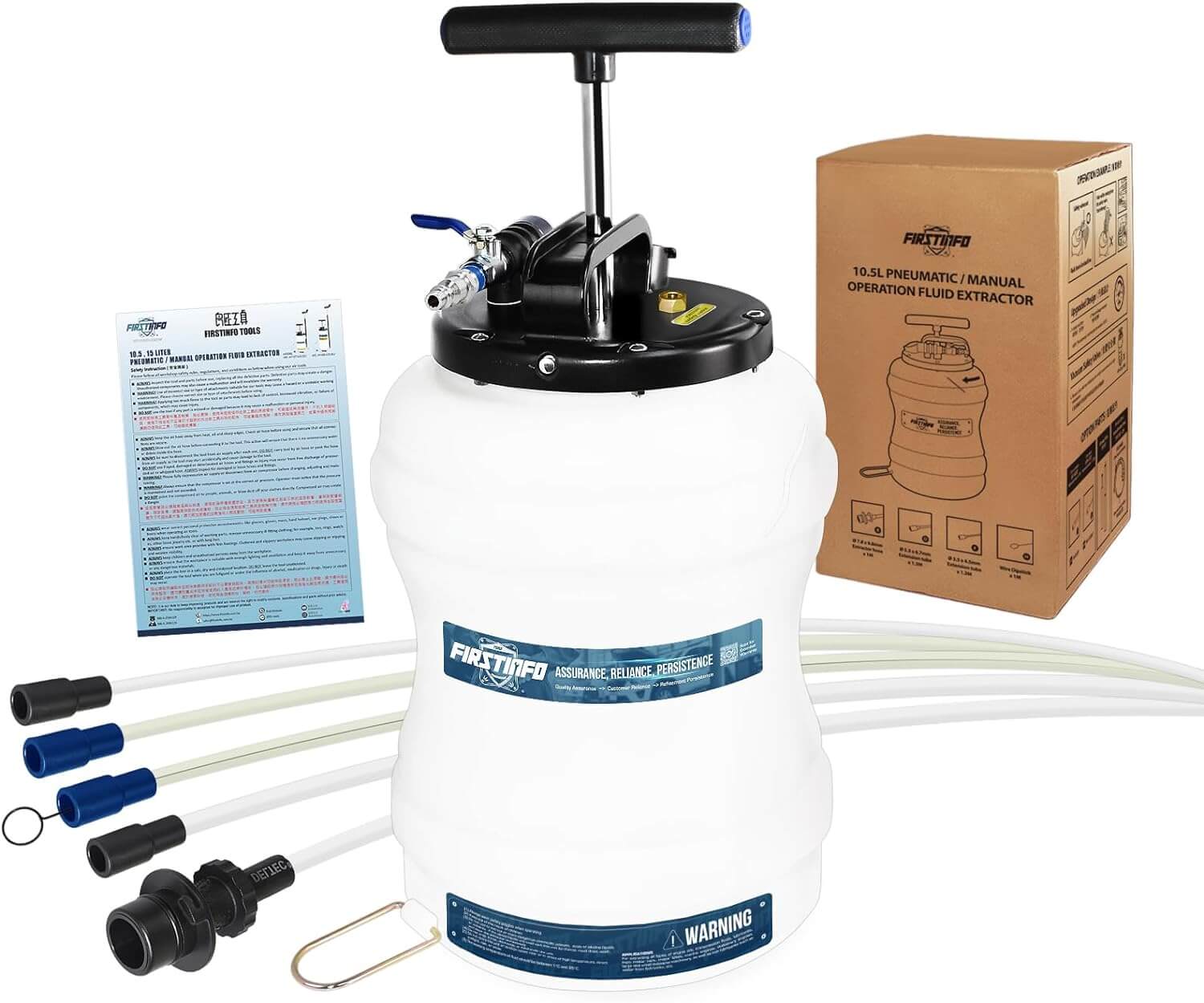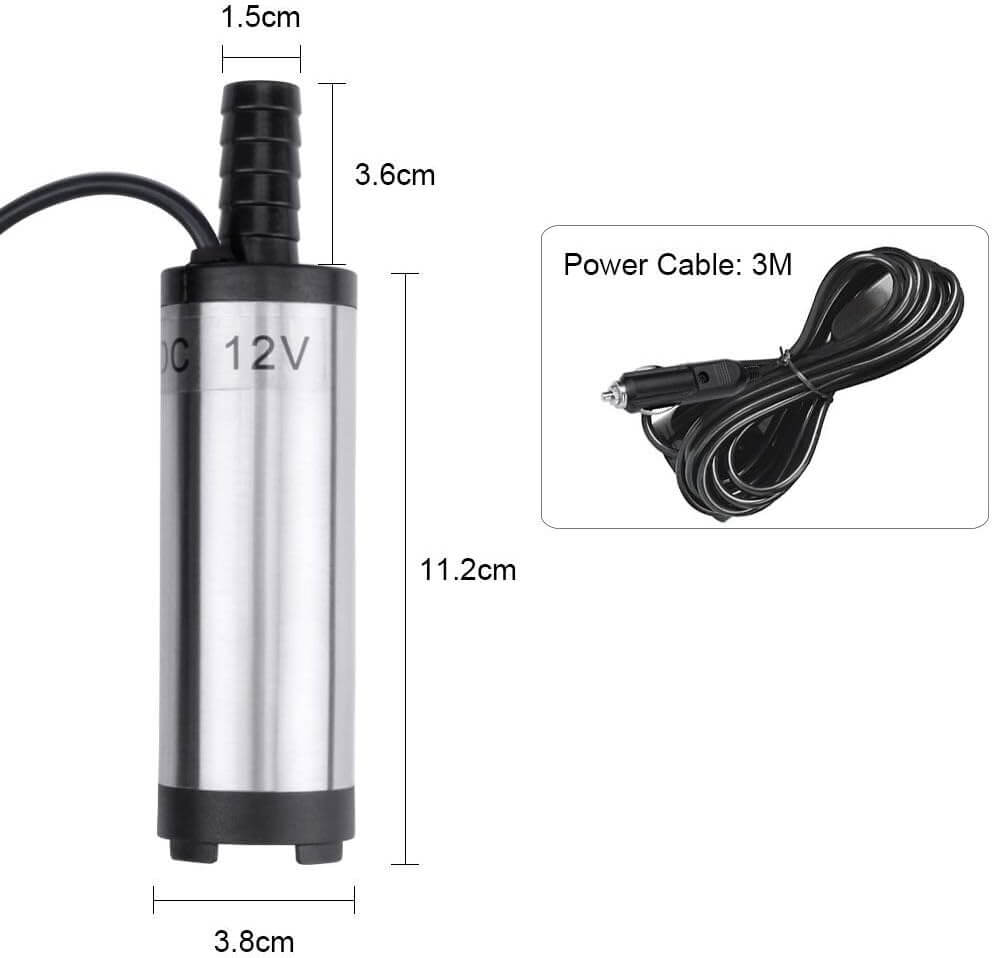How Does An Oil Pump Extractor Handle Oil Oxidation During Extraction?
In the world of oil pump extractors, one pressing concern that often comes to mind is how these machines handle oil oxidation during extraction. Understanding how an oil pump extractor tackles this issue is crucial for vehicle owners, DIY enthusiasts, and professionals in the automotive sector alike.
With a commitment to providing educational and actionable content, our articles aim to empower readers by offering a harmonious blend of straightforward tutorials and deep insights.
In this article, we will explore the effective methods employed by oil pump extractors in managing oil oxidation during the extraction process, ensuring a well-rounded understanding without overwhelming the reader. Let us dive in and discover how these machines play a vital role in maintaining oil quality and prolonging the life of your vehicles.
Understanding Oil Oxidation
What is oil oxidation?
Oil oxidation refers to the chemical reaction that occurs when oil is exposed to oxygen over time. This reaction leads to the formation of various compounds that can have detrimental effects on the oil’s performance and lifespan. Oxidation is a natural process that happens to all types of oil, including those used in vehicles, and understanding it is crucial for maintaining the quality of the oil.
Causes of oil oxidation
Several factors can contribute to oil oxidation. The primary cause is exposure to air or oxygen, which initiates the oxidation process. Other factors that can accelerate oxidation include high temperatures, contaminants, moisture, and the presence of certain metals in the oil. It’s important to note that oxidation becomes more pronounced as oil ages and is repeatedly exposed to these factors.
Effects of oil oxidation
Oil oxidation can have several negative effects on the performance of the oil and the machinery in which it is used. One of the primary effects is the decrease in oil’s lubricating properties. Oxidized oil forms sludge and deposits that can clog lubrication channels, leading to increased friction and wear on the engine components.
Additionally, oxidation can generate acids that corrode metal surfaces, further damaging the machinery. Overall, oil oxidation reduces the oil’s effectiveness and can shorten the lifespan of the equipment.
Introduction to Oil Pump Extractors
What is an oil pump extractor?
An oil pump extractor is a handy tool designed to remove oil from engines, transmissions, and other machinery without the need for traditional methods such as gravity draining or using a drain plug. It uses vacuum technology to extract the oil efficiently, making the oil-changing process quicker and cleaner. Oil pump extractors are widely used by vehicle owners, DIY enthusiasts, and professionals in the automotive sector due to their convenience and effectiveness.
How does an oil pump extractor work?
An oil pump extractor works by creating a vacuum that sucks the oil out of the engine or transmission. It consists of a container to hold the extracted oil, a vacuum pump or mechanism, and a tube or hose to connect to the oil reservoir. When the pump is activated, it creates a negative pressure that draws the oil through the tube and into the container. The process is generally straightforward and doesn’t require any complicated setup.
Benefits of using an oil pump extractor
Using an oil pump extractor offers several benefits compared to traditional oil-changing methods. First and foremost, it provides a cleaner and more efficient way to extract oil, minimizing the risk of spills and mess. It also saves time by eliminating the need to crawl under the vehicle or remove the drain plug. Additionally, an oil pump extractor allows for precise oil extraction, ensuring that no oil is left behind. It is also versatile, as it can be used on various types of machinery and vehicles. Overall, using an oil pump extractor streamlines the oil-changing process and makes it more convenient for users.
Preventing Oil Oxidation During Extraction
Importance of preventing oil oxidation
Preventing oil oxidation during extraction is crucial for maintaining the quality of the oil and prolonging its lifespan. Oxidized oil can lead to decreased lubrication, increased wear and tear on the machinery, and potential damage to engine components. By taking proactive steps to prevent oxidation during the extraction process, you can ensure that the oil remains in optimal condition and continues to provide effective lubrication and protection.
Choosing the right oil pump extractor
Selecting the right oil pump extractor is essential for preventing oil oxidation during the extraction process. Look for extractors that are specifically designed to minimize exposure of the oil to air during extraction. These extractors often have sealed systems and mechanisms in place to prevent the entry of oxygen into the oil reservoir. It’s also important to consider the capacity and compatibility of the extractor with your specific machinery. Choosing a high-quality extractor will greatly reduce the risk of oil oxidation during the extraction process.
Preparing the extraction process
Proper preparation is key to preventing oil oxidation during the extraction process. Start by ensuring that the machinery is in a suitable state for extraction, such as operating at the recommended temperature. It’s also important to clean the oil reservoir and surrounding areas to minimize the presence of contaminants that can accelerate oxidation. Additionally, make sure to follow the manufacturer’s instructions for operating the oil pump extractor and extracting the oil. Taking these steps will help minimize the risk of oxidation and ensure a successful extraction process.
Sealing Mechanisms
The role of seals in preventing oxidation
Seals play a crucial role in preventing oil oxidation during the extraction process. They act as barriers that prevent the entry of air or oxygen into the oil reservoir, minimizing the contact between the oil and the atmosphere. By creating a tight seal, these mechanisms ensure that the extracted oil remains protected from oxidation, preserving its quality and lubricating properties.
Types of seals used in oil pump extractors
Different types of seals are used in oil pump extractors to prevent oxidation. Common types include O-rings, gaskets, and sealing washers.
These seals are typically made from materials such as rubber, silicone, or metal. Each type of seal has its specific advantages and considerations, such as compatibility with different types of oils and resistance to high temperatures. It’s important to choose oil pump extractors with high-quality seals that are designed to withstand the conditions of extraction and prevent oxidation effectively.
Benefits of high-quality seals
Using high-quality seals in oil pump extractors offers several benefits in preventing oil oxidation. Firstly, these seals provide a reliable barrier against air and oxygen, ensuring minimal contact with the oil during extraction. They are also more durable and resistant to wear, minimizing the risk of seal failure and subsequent exposure to oxidation.
Additionally, high-quality seals are designed to withstand high temperatures, ensuring that they remain intact and effective throughout the extraction process. Investing in oil pump extractors with high-quality seals is a proactive step in preventing oil oxidation and preserving the quality of the extracted oil.
Temperature Control
The impact of temperature on oil oxidation
Temperature has a significant impact on oil oxidation. Higher temperatures accelerate the oxidation process, leading to the formation of more oxidation byproducts. The rate of oxidation roughly doubles for every 10-degree Celsius increase in temperature. Therefore, it is crucial to control and maintain appropriate temperatures during the extraction process to minimize the risk of oil oxidation.
Heat management in oil pump extractors
Oil pump extractors typically have heat management mechanisms in place to control the temperature during the extraction process. These mechanisms may include features such as heat-resistant components, insulation, and cooling systems. By effectively managing the heat generated during extraction, these mechanisms help prevent excessive temperature rise and minimize the risk of oil oxidation.
Cooling systems and their effectiveness
Some oil pump extractors incorporate cooling systems to actively regulate the temperature during extraction. These systems can include fans, heat exchangers, or cooling fluids that help dissipate heat and maintain lower temperatures. Cooling systems effectively reduce the risk of oil oxidation by keeping the oil and extraction equipment within the optimal temperature range. When choosing an oil pump extractor, consider the effectiveness of its cooling system to ensure that it provides sufficient heat management to prevent oil oxidation during extraction.
Vacuum Technology
Using vacuum technology to minimize oxidation
Vacuum technology is a key component in minimizing oil oxidation during extraction. By creating a vacuum, oil pump extractors ensure that the oil is extracted without exposure to air or oxygen. This airtight environment significantly reduces the risk of oxidation, preserving the quality of the extracted oil.
How vacuum extracts oil without exposure to air
Vacuum extraction works by creating a negative pressure that pulls the oil from the engine or transmission. The vacuum created by the oil pump extractor effectively sucks out the oil through the tube, without allowing any air or oxygen to enter the oil reservoir. This ensures that the oil remains isolated from the atmospheric conditions that promote oxidation, maintaining its quality and preventing the formation of harmful byproducts.
Advantages and limitations of vacuum extraction
Vacuum extraction offers several advantages in minimizing oil oxidation. It provides a clean and efficient method of extracting oil, reducing the risk of spills and contamination. The airtight extraction process prevents the entry of air or oxygen, ensuring the oil remains protected from oxidation. However, it’s important to note that vacuum extraction may have limitations in certain situations, such as when dealing with highly viscous or debris-laden oil. In such cases, additional pre-filtration or manual removal of contaminants may be necessary.
Filtration Systems
The importance of filtration in reducing oxidation
Filtration plays a critical role in reducing oil oxidation during the extraction process. Contaminants in the oil, such as dirt, debris, and metal particles, can accelerate oxidation and compromise the quality of the oil. By incorporating effective filtration systems, oil pump extractors can remove these contaminants, minimizing their negative impact and reducing the risk of oil oxidation.
Types of filtration systems in oil pump extractors
Oil pump extractors may utilize different types of filtration systems to remove contaminants. Common types include mesh filters, cartridge filters, and centrifugal filters. Mesh filters are typically used to capture larger particles, while cartridge filters offer finer filtration. Centrifugal filters use centrifugal force to separate contaminants from the oil. The choice of filtration system depends on the specific requirements of the extraction process and the desired level of filtration.
Choosing the right filtration system for your needs
When selecting an oil pump extractor, consider the filtration system it uses and its effectiveness in reducing oxidation. Look for extractors that incorporate high-quality filtration systems capable of removing a wide range of contaminants. Additionally, consider the ease of maintenance and replacement of the filtration system, as regular maintenance is essential for its continued effectiveness. Choosing the right filtration system will ensure that the oil extracted remains clean and free from contaminants, minimizing the risk of oxidation.
Maintenance and Cleaning
Regular maintenance to prevent oil oxidation
Regular maintenance is crucial for preventing oil oxidation in oil pump extractors. This includes inspecting and cleaning the extractor’s components to ensure their proper functioning. It’s important to follow the manufacturer’s recommended maintenance schedule and guidelines to keep the extractor in optimal condition and minimize the risk of oil contamination and oxidation.
Cleaning the oil pump extractor after use
Properly cleaning the oil pump extractor after each use is essential for preventing contamination and subsequent oxidation. Start by draining and disposing of the extracted oil according to proper waste disposal guidelines. Then, clean the extractor’s components, such as the container, hoses, and filters, using appropriate cleaning agents. Thoroughly rinse and dry the components before reassembling the extractor. Regular cleaning ensures that the oil pump extractor remains in good working condition and reduces the risk of oil oxidation during subsequent uses.
Replacing worn-out components
Regularly inspecting and replacing worn-out components in the oil pump extractor is vital for maintaining its effectiveness and preventing oil oxidation. Seals, filters, and hoses can deteriorate over time, compromising the extractor’s ability to prevent contamination and oxidation. Follow the manufacturer’s guidelines for component replacement and ensure that only high-quality replacement parts are used. By replacing worn-out components, you can ensure the extractor remains in optimal condition, reducing the risk of oil oxidation.
Monitoring and Testing
Methods for monitoring oil oxidation levels
Monitoring oil oxidation levels is essential for maintaining the quality of the oil and identifying potential issues early on. There are several methods for monitoring oil oxidation, including visual inspection, chemical test kits, and oil analysis. Visual inspection involves observing the oil’s color, consistency, and presence of any sludge or deposits. Chemical test kits provide indicators that change color in the presence of oxidized oil. Additionally, oil analysis performed by specialized laboratories can provide detailed information about the oil’s condition and oxidation levels.
Testing oil samples for oxidation
Testing oil samples in a laboratory setting is a more comprehensive method for determining oil oxidation levels. These tests measure parameters such as acid number, peroxide number, and viscosity, which can indicate the extent of oil oxidation. By regularly testing oil samples, you can identify any increased oxidation levels and take appropriate actions to prevent further degradation of the oil and equipment.
Signs of oil oxidation to look out for
There are several signs that indicate oil oxidation may have occurred. These include changes in the oil’s color, such as darkening or forming a cloudy appearance. The presence of sludge or deposits in the oil can also be an indicator of oxidation. Additionally, noticeable changes in the oil’s viscosity or a foul odor may suggest increased oxidation. Regularly inspecting the oil for these signs and performing appropriate testing can help detect oil oxidation early and prevent further damage to the equipment.
Best Practices for Oil Extraction
Proper extraction techniques to minimize oxidation
Adhering to proper extraction techniques is essential for minimizing oil oxidation. Start by ensuring that the equipment is in good condition and operating at the recommended temperature. Follow the manufacturer’s instructions for operating the oil pump extractor and use the appropriate extraction settings. Minimize the time the oil is exposed to air during extraction by using a sealed system and maintaining an airtight seal. These techniques will help reduce the risk of oxidation and preserve the quality of the extracted oil.
Storing extracted oil to prevent further oxidation
After extracting the oil, proper storage is crucial to prevent further oxidation. Transfer the oil to suitable storage containers that provide airtight seals to minimize exposure to air and oxygen. Store the containers in a cool, dry place, away from direct sunlight and extreme temperatures. It is also important to label the containers with the extraction date and type of oil for easy identification. By implementing proper storage practices, you can prolong the shelf life of the extracted oil and maintain its quality.
Considerations for long-term storage
For long-term storage of oil, additional precautions may be necessary to prevent oxidation. Consider using antioxidant additives designed to inhibit oxidation and minimize the formation of harmful byproducts. These additives can be mixed with the oil before storage or applied during the extraction process.
Additionally, regularly monitoring the stored oil for any signs of oxidation and conducting periodic oil analysis can help identify any potential issues and take timely preventive measures.
In conclusion, understanding oil oxidation is essential for maintaining the quality of the oil and prolonging the lifespan of equipment.
Oil pump extractors play a crucial role in minimizing oil oxidation during the extraction process by incorporating sealing mechanisms, temperature control, vacuum technology, filtration systems, and proper maintenance practices. By following best practices and taking necessary precautions, you can effectively handle oil oxidation during extraction and ensure that the extracted oil remains clean, free from contaminants, and protected from oxidation.


